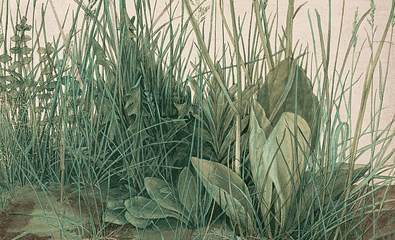If you were a field mouse, a meadow would be your home, where lots of greens might make your mouth water. You look ahead and see a salad of delicious plants, and you head straight for it. This is how we see the watercolor “The Great Piece of Turf” (1503) by Albrecht Dürer (1471–1528)—from the perspective of a small animal, such as a field mouse.
Renaissance artists were discovering the beauty of nature with the help of new findings in science. Dürer’s interest in botany propelled him to study various plants and to draw them almost scientifically. In his newly established workshop in Nuremberg, Germany, Dürer made nature studies and, in this case, a composition of common meadow plants.






